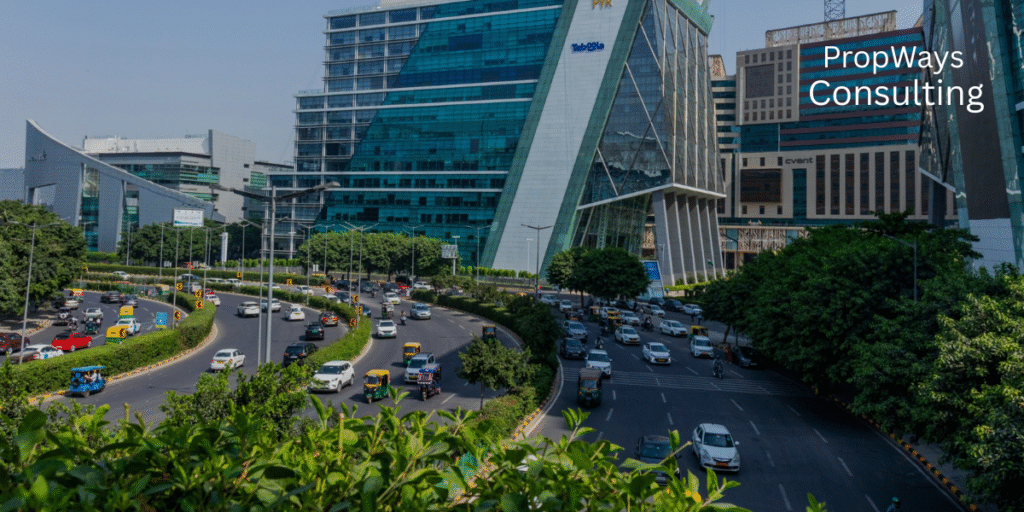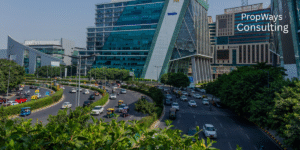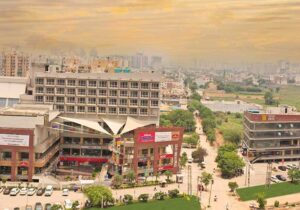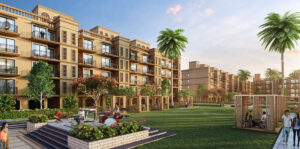Gurgaon, officially known as Gurugram, has emerged as one of India’s most dynamic real estate markets. Over the last two decades, the city has transformed from a quiet suburb into a hub of IT parks, global offices, luxury residences, and commercial centers. Among the many factors driving this growth, infrastructure connectivity has played the most important role.
The expansion of the Delhi Metro into Gurgaon and the development of expressways like Dwarka Expressway, NH-48, and the Sohna Elevated Road have created a new wave of demand in the Gurgaon real estate market. Better connectivity reduces travel time, increases accessibility, and builds investor confidence — all of which directly impact property prices and sales. This blog takes a closer look at how metro and expressway projects are reshaping Gurgaon real estate and what it means for buyers and investors.
1. Why Connectivity is Crucial in Real Estate
In every real estate market, connectivity is a deciding factor. A project that offers faster access to workplaces, airports, hospitals, and schools will always attract higher demand compared to one in an isolated area. In Gurgaon real estate, connectivity has proven to be the game-changer.
Earlier, buyers restricted their choices to well-established areas like MG Road or DLF Phases. But with the expansion of metro lines and new highways, emerging sectors along Dwarka Expressway, Sohna Road, and New Gurgaon are now preferred. Infrastructure projects reduce travel fatigue, improve lifestyle convenience, and bring down overall commuting costs.
For investors, these corridors signal higher appreciation potential. A flat near a metro line or an expressway is not only easier to rent out but also appreciates faster in value, ensuring strong returns in the long run.
2. Metro Expansion – Changing Gurgaon’s Property Map
The Delhi Metro and the Rapid Metro have completely altered the way people view Gurgaon real estate. The Yellow Line extension and the operational Rapid Metro have brought Cyber City, Golf Course Road, and other prime areas within easy reach of Delhi and the wider NCR.
Upcoming projects like the HUDA City Centre–Old Gurgaon–Dwarka corridor and the Dwarka Expressway metro line are expected to open up entirely new investment pockets. These metro links will connect residential hubs with major job centers, ensuring demand from both homebuyers and tenants.
Some key impacts of metro expansion on Gurgaon real estate include:
- Reduced Travel Time: Professionals prefer homes near metro stations, increasing demand.
- Higher Rentals: Apartments within 1–2 km of metro stations command 15–20% higher rents.
- Increased Investor Confidence: Metro projects signal government focus on long-term growth.
- Balanced Development: Peripheral sectors are gaining the same traction as central areas.
Metro projects have effectively decentralized Gurgaon’s property market, giving equal opportunity for growth to newer sectors.
3. Expressways – Fueling Growth Corridors
Expressways are the backbone of Gurgaon’s connectivity. The most influential among them is the Dwarka Expressway, connecting Gurgaon with Delhi and IGI Airport. Property values along this corridor have already seen significant appreciation, and once the project is fully operational, the impact will multiply.
The NH-48 continues to be a prime commercial and residential stretch, connecting Gurgaon to Jaipur and Delhi. The recently developed Sohna Elevated Road has opened up southern Gurgaon sectors, reducing travel time and encouraging developers to launch new townships. Similarly, the Kundli-Manesar-Palwal (KMP) Expressway is strengthening industrial and logistics connectivity, which indirectly boosts housing demand in nearby areas.
The impact of these expressways on Gurgaon real estate is clear:
- Emerging sectors have turned into hotspots for developers.
- Investors have gained strong returns on early land purchases.
- Luxury projects are rising alongside affordable housing.
- Commercial hubs and office spaces are expanding to peripheral zones.
Expressways are no longer just roads — they are growth corridors shaping Gurgaon’s future.
4. Changing Buyer and Investor Preferences
Connectivity projects have reshaped how buyers and investors look at Gurgaon real estate. Earlier, demand was concentrated around central Gurgaon sectors, but now buyers are actively exploring emerging areas. Families prefer sectors near Dwarka Expressway because of better connectivity to Delhi, while young professionals choose projects near metro lines for convenience.
Investors also find comfort in these locations because improved infrastructure ensures long-term value. Projects located near expressways and metro lines are selling faster, while those in isolated pockets are struggling. Developers have responded by launching gated communities, integrated townships, and luxury apartments in these growth corridors.
Overall, the buyer profile in Gurgaon real estate has become more open to new sectors, thanks to metro and expressway projects.
5. The Investment Outlook for Gurgaon Real Estate
The outlook for Gurgaon real estate remains strong, driven by infrastructure-led growth. Industry reports suggest that areas near metro corridors and expressways appreciate 15–25% faster than non-connected regions. Rental yields in metro-accessible locations are also higher, ensuring steady income for investors.
The Dwarka Expressway belt is being referred to as “the next Golf Course Road,” attracting luxury projects by reputed developers. Similarly, New Gurgaon and Sohna Road are gaining traction with affordable housing and commercial developments. Over the next decade, Gurgaon real estate is expected to remain one of the most lucrative markets in India.
For homebuyers, this means better lifestyle options and reduced travel time. For investors, this means stronger returns and safer bets compared to many other Indian cities. With infrastructure driving growth, Gurgaon will continue to be the epicenter of NCR real estate.
Conclusion
Metro and expressway projects are reshaping Gurgaon real estate in ways never seen before. They are reducing travel times, expanding the city’s growth corridors, and creating new opportunities for both buyers and investors. Areas that were once considered outskirts are now buzzing with residential and commercial activity, thanks to these connectivity upgrades.
For those looking to invest or settle in Gurgaon, focusing on properties near metro lines and expressways is a smart strategy. As the city continues to evolve, such locations will not only enhance daily living but also deliver long-term appreciation. Gurgaon real estate is truly being transformed by its metro and expressway networks, making it one of the strongest property markets in India.






